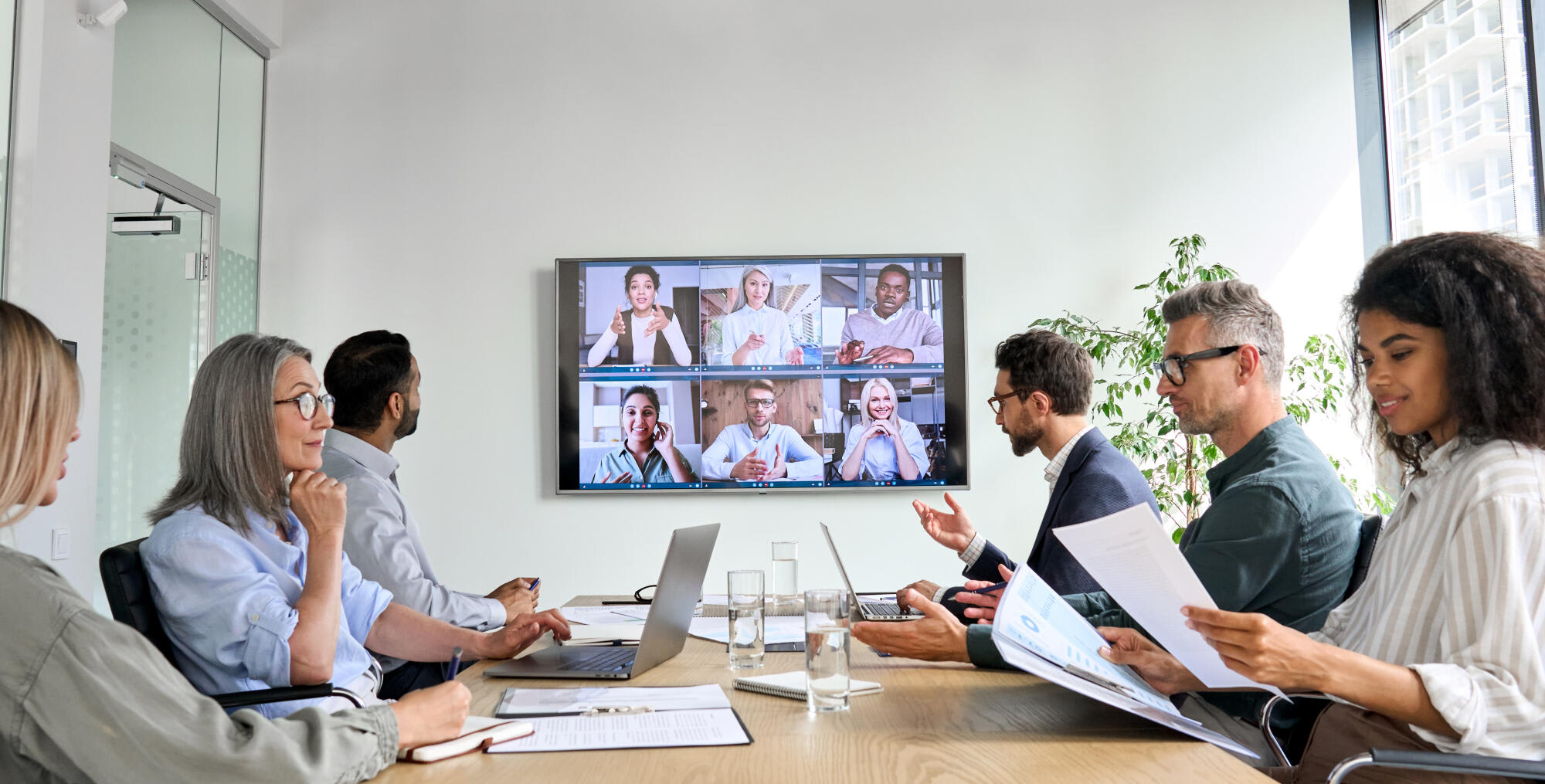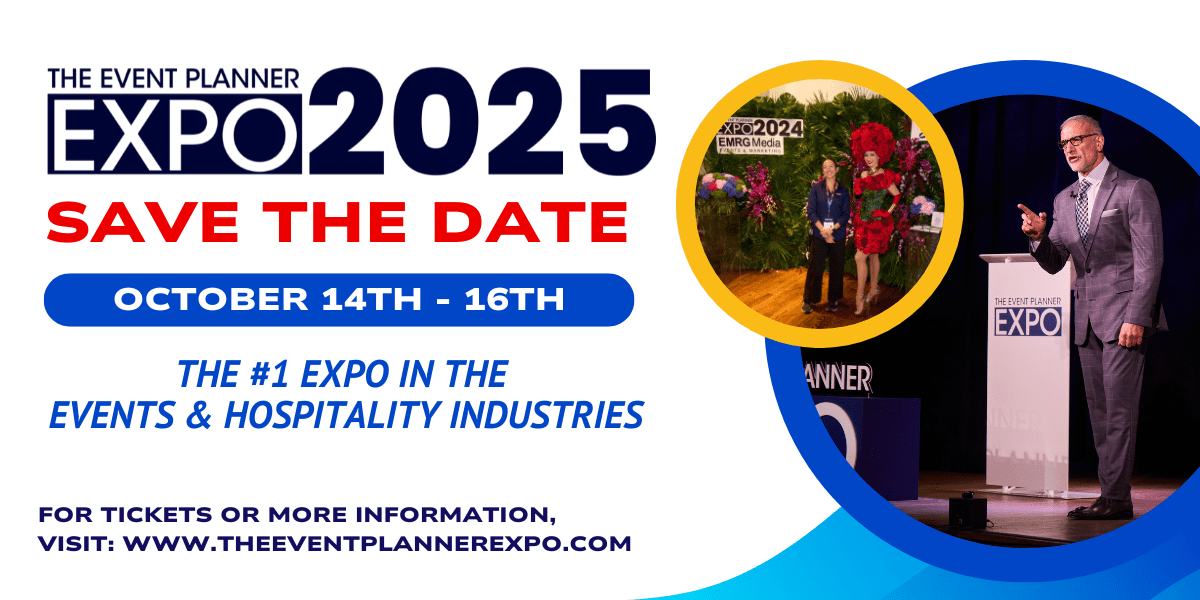Mastering Conference Event Management: How to Plan for Success

After a brief hiatus in 2020, the global events market is back on track to reach its forecasted value of $1,800 billion by 2032, driven by a growing need for live entertainment, engagement, and corporate gatherings.
Conferences are in high demand as strategic tools for networking, brand promotion, and marketing as businesses realize their importance in an ever-more interconnected world.
Are you ready to give the people what they want? Here's your ultimate guide to conference event management.
Define Your Conference Event Management Goals
Your conference goals will shape all your event planning strategies. Follow these steps to devise a solid plan:
Identify Specific Goals
You must understand the primary purpose of the event. Do you want to:
- Enhance brand awareness, e.g., increase social media mentions by 10%.
- Create networking opportunities.
- Attendee engagement, e.g., achieving 80% participation in event activities.
- Generate leads, e.g., capture 400 new leads during the event.
Your goals must align with corporate needs and overall marketing strategy, so collaboration with stakeholders is key during this phase.
Define KPIs
Set measurable objectives to track success. These might include attendee numbers or the amount of revenue generated.
Develop an Event Strategy
With the above pointers in mind, outline specific tactics and actions to achieve your goals. For instance, targeted event marketing techniques are effective for maximizing attendance.
Budget Planning
Although 64% of managers anticipate increased budgets for events in 2025, rising costs mean event planners must still work carefully to stay within their financial limits.
Allocating these funds most impactfully involves following a structured approach encompassing the following aspects:
Setting Financial Goals
Establish clear financial objectives for your conference. Determine whether you aim to:
- Break-even
- Cover specific costs
- Make a profit
Understanding the financial outcome shapes your overall planning strategy.
Identifying Costs
Event budgeting comprises both fixed and variable costs. Fixed costs, like insurance or venue hire costs, remain constant regardless of the number of attendees.
Variable costs include things that fluctuate depending on how many people attend your conference, like:
- Materials
- Catering
- Unexpected expenses
Listing Event Requirements
Creating lists is central to effective conference management, and you'll need a detailed breakdown of every expense when setting a budget. Some categories of expenses include:
- Venue hire
- Audio-visual equipment
- Food and beverage options
- Marketing and promotion
- Staffing and security
- Speaker fees
- Transportation and accommodation
Estimating Expenses
Once you've written down everything you need, the next step is requesting quotations for each line item. Historical data can help you estimate variable costs more accurately.
You should set aside around 10% of your budget for unforeseen expenses.
Identifying Revenue Sources
When you've determined how much money you need to run your conference, the next step is finding the funds. If you're lucky, you'll have a company eventing budget to fall back on.
Otherwise, you must explore alternatives, like:
- Registration fees
- Sponsorships
- Advertising
- Booth rentals
- Merchandise sales
Creating a Budget Proposal for Stakeholders
Compiling a budget proposal is the final step in corporate event planning budgeting. A formal budget proposal should comprise:
- The event's purpose and goals
- Expected revenues and expenses
- Historical data from past events
- Contingency plans for potential overruns
You'll likely need to refine your proposal several times during collaborations with stakeholders until you find a way to align financial realities with organizational expectations.
Venue Selection
Your choice of venue can make or break your event. By carefully considering the factors and steps listed below, you can select a conference venue that enhances the overall experience for your attendees and contributes to the success of your event.
These are the steps for choosing a suitable venue for your event:
- Define your event venue requirements
- Research potential venues
- Visit suitable venues
- Evaluate costs
- Gather proposals
- Choose your venue
These are the things to consider when selecting a conference venue:
Location
Choose a venue that is easily accessible for attendees, ideally near major transportation hubs like airports or public transport. This reduces travel time and enhances attendee satisfaction.
Size and Capacity
Ensure the venue can comfortably accommodate your expected number of attendees. Venues that are too small or too large can affect the event's atmosphere.
Accessibility
Look for venues offering attractive accessibility options, such as parking, and facilities for individuals with disabilities. This improves the overall experience for all attendees.
Amenities and Services
Evaluate nearby accommodations, dining options, and other amenities. A venue in a well-serviced area is more appealing.
AV and Technology Requirements
Confirm the venue has the necessary audio-visual equipment and reliable internet access to support your event. Effective technology minimizes disruptions during presentations.
Flexibility of Space
Opt for venues offering flexible room configurations to accommodate different sessions, such as workshops or keynote speakers. Adaptability enhances engagement by adding variety to your event.
Cost Management
Assess the cost of using the venue, including any additional fees for services or equipment. Ensure that it aligns with your budget and try to negotiate the best prices.
Event Type and Purpose
Define your specific requirements based on the type of conference you are hosting, e.g., a workshop or networking event. This will help you select a venue that meets those specific needs.
Scheduling and Agenda Development
Precise scheduling is imperative for successful conference execution. A well-structured agenda guides attendees through the event and ensures a balanced mix of informative sessions and networking opportunities to enhance their overall experience.
Follow these steps to develop your conference agenda:
- Gather information well in advance
- Draft the agenda logically and allocate time slots
- Review and optimize the agenda with feedback from stakeholders
- Finalize the details and distribute the agenda
Key Elements of Conference Scheduling
Every good conference schedule has six key components. These are:
1. Definite Objectives
You must keep the goals of the conference in mind at all times. Analyze past events, identify what attendees expect, and gather feedback from key role players before you start work on the agenda.
2. Create a Detailed Timeline
Specify the start and end times for each session. Each session should last no longer than 60 minutes to maintain engagement.
3. Add Buffer Times
Incorporate short breaks into the agenda. This will accommodate overruns and also allow the attendees to enjoy refreshments.
4. Session Breakdowns
Session breakdowns help attendees plan and know what to expect. Each session should have a:
- Clear focus
- Title
- Description
- Speaker information
Multiple tracks and concurrent sessions cater to diverse interests, but you must label them clearly to avoid confusion.
5. Flexibility and Communication
Maintain a master schedule that can be updated easily as changes occur. Communicate any changes promptly.
6. Accessibility
Ensure the schedule is easily accessible through various formats such as mobile apps, printed handouts, or digital platforms. This enhances participant engagement and satisfaction during the event.
Speaker and Content Curation
Effective speakers and content curation are crucial for the success of any conference. You must select relevant speakers and use content that aligns with the event's objectives. Here's how to get it right:
- Select expert speakers
- Tailor topics accordingly
- Embrace diverse perspectives
- Prioritize interactive content
In some cases, you can curate content you already have, like articles or past talks, and incorporate it into your event.
Engaging attendees before the event helps build anticipation for the conference. Engaging with them afterward by sharing photographs, articles, and videos will keep them interested long after the fact.
When reaching out after the event, it's also important to gather feedback and information you could use for future events.
Leveraging Technology for Event Success
In the modern event landscape, technology plays a pivotal role in the success of any event. The strategic use of various technological tools streamlines processes and enriches attendee experiences.
You can use technology for the following key aspects of your event:
Streamlined Registration and Ticketing
Online platforms simplify the registration process by allowing attendees to sign up, select sessions, and make payments with ease. This eliminates manual paperwork and long queues to enhance efficiency and reduce administrative burdens.
Enhanced Attendee Experiences
Mobile event apps are instrumental in personalizing attendee experiences. They offer features such as:
- Real-time updates
- Personalized schedules
- Interactive maps
- Networking opportunities
In this way, they help you create a more relevant experience by fostering engagement among participants and tailoring content according to individual preferences.
Virtual and Hybrid Events
Virtual and hybrid events leverage the following tools to save on costs while connecting participants both globally and in person:
- Web conferencing tools
- Live streaming platforms
- Virtual reality experiences
Data-Driven Decision Making
Technology enables and simplifies the collection and analysis of data throughout the event lifecycle. By leveraging these insights, organizers can make informed decisions for future events.
Interactive Engagement
Interactive tools include things like Q&A sessions, live polling, and gamification to boost attendee engagement. You can also create immersive experiences using tools like VR and AR to impress delegates and leave a lasting impression.
Effective Communication
Communication channels, like event apps, social media platforms, and chatbots, allow for effective engagement between organizers and attendees.
By strategically leveraging technology across these dimensions, event organizers can significantly elevate the success of their events.
Next Level Conference Event Planning
This refresher course in conference event planning is your go-to when it comes to planning great events. Bookmark this page and refer back to it regularly, so you don't miss any key steps when arranging your next conference.
Even better, join us at The Event Planner Expo to get ahead in the realm of conference event management. Here you can network with other professionals, discover the latest conferencing trends, and find inspiration to create exceptional events.
Join this year's experience by reserving a booth at The Event Planner Expo 2025!
